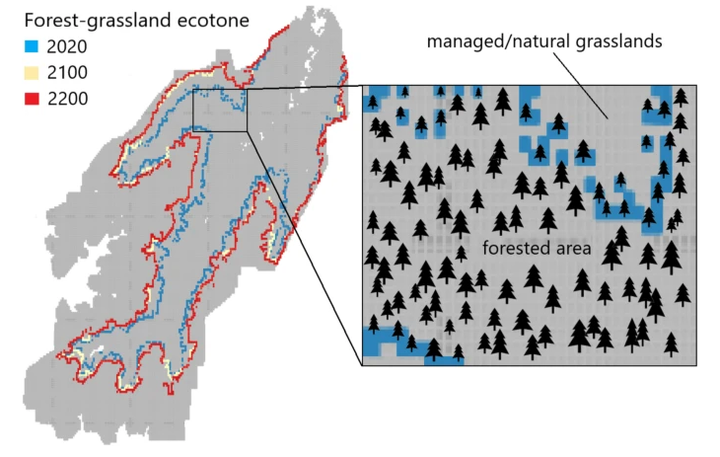Future expansion of upper forest-grassland ecotone under land-use and climate change in the Eastern Alps

Abstract
Across Alpine landscapes, a combination of land-use abandonment and climate change is driving forest expansion and promoting the upward migration of trees on grasslands. Yet, it remains unclear how rapidly the upper forest-grassland ecotone will shift and how tree species composition will change, both in terms of species proportions and along elevational gradients. Our aim is to investigate the future forest expansion in a landscape in the Eastern Alps under potential grassland abandonment, climate change, natural disturbances (wind and bark beetle), and forest management. We used the iLand forest landscape model to simulate long-term dynamics (2020–2200) under different scenarios. We coupled model outputs with the concave hull algorithm to identify potential changes in the forest-grassland ecotone, tracking tree species expansion and quantifying elevation and compositional shifts. Under a potential abandonment of alpine grasslands, forest will likely expand rapidly within the twenty-first century regardless climate warming. This because the current upper forest-grassland ecotone is mainly constrained by land use rather than climate. Our simulations also showed that ecotone shifts will be more pronounced on S-facing slopes, while climate change will affect more future tree species composition and forest stocking at higher elevations. Our outcomes provide useful insights on future dynamics of the upper forest ecotone by using a forest landscape model and by integrating not only species migration and climate but also other factors such as disturbances and management. Our results could provide useful information for designing landscape management strategies in rapidly changing Alpine mountain valleys.